Conspiracy Theory Review-Analysis; Our Hidden Rulers are Phoenician
Last Updated on April 20, 2022 by Hamad Subani

Part Three: The Use of Phoenician “Lords” in the Bible, and the Subsequent Editing Coverup
Gerry dives into this part by dissecting the names used in the Bible for “God.” Here’s his thesis:
This one will be very uncomfortable since it concerns the Names of God. Yes, that God. I think some of God’s names were edited away, because either someone played around with those names, or the Biblical editors thought someone did, or the Biblical editors thought that some Biblical readers would think someone did. I am one of those readers.
Further,
In the Bible, there are mainly three Hebrew words for “God” or “gods”: Adon, Baal, El. However, all three can also mean simply “lord”, as for human lords. Like many other ancient languages, Hebrew has no exclusive word for gods. (Conversely, the English uppercase LORD in the Bible does not stand for “lord”, but for God’s name YHWH, which has no officially known meaning.)
I cannot overstate the importance of this. Human beings create meanings, ideas and concepts in their minds from words. The words which denote God (not necessarily the above three), were in my opinion, not of human origin, despite their capacity to be spelt out and read in human languages. They were from the Creator himself, if you go with the Islamic line of thinking. Whoever was substituting or playing around with these words was clearly up to no good.
The YHWH Contradiction
Lets follow Gerry’s reasoning on the usage of a YHWH bit more,
[……] In the Biblical narrative, God reveals his name YHWH to Moses in the Book of Exodus, stating that this revelation is new and that the name YHWH has not been revealed before.
But
Yet in earlier verses from the Book of Genesis, God already appeared to Abraham and Jacob and revealed his name as YHWH, even using the exact same phrase: “I am the LORD.”
This is a known contradiction. To quote Gerry,
This is a widely known contradiction. The most famous explanation is that all books have been compiled from different sources, with an “Elohist” source using the El names and a “Yahwist” source using YHWH.
But Gerry has a novel theory:
I think that YHWH was used to censor out older names of God that became unwanted in later times. For this, the editors wouldn’t need a different source, but would just copy the existing text and insert YHWH in place of the old names.
Such a mass editing of Christian Bibles did take place after the emergence of Islam because they didn’t want people jumping ship after rightly reasoning that El – Elohim and Allah were the same thing. But still, that does not explain why other names such as Baal (which is not found in Islamic Canonical Literature) were also edited out. So back to Gerry’s theory.
Since the Canaanite religions often titled gods as Baal, I would also substitute El for Baal, since both words mean “lord” and were used for gods. I actually did find some of these names, but to my astonishment they were not names of gods, but of people, powerful people even, with human “lords” among them.
……they were not names of gods, but of people, powerful people even, with human “lords” among them.
Human gods?
Ok. Such names are called theophoric names, and appear to be common in ancient times, often used in conjunction with the person’s common name. But Gerry has pointed out a potential problem.
[…..] A problem would arise if a human lord using that name was so powerful that he would be called an El or Baal himself, so you wouldn’t know whom the “lord” refers to. Were there lords like that? Yes, I found indeed such an example: three kings of Byblos, a wealthy Phoenician merchant city in Israel’s vicinity, were written Shaphat-Baal.
Shaphat means “Judge,” and since that is a godly quality, using it in conjunction with Baal literally makes these people “gods.” Interestingly, Gerry has also found a verse in Genesis, where the name of God was probably entered as Shaphat-Baal, and then later edited to YHWH, just so that people like you and me would never make the connection.
But in some cases, they became sloppy with their editing of the Bible. In the Book of Genesis, Hagar is visited by a messenger of “El-Roy,” or the “God who sees.” Gerry has noticed that mainstream scholars avoid the straightforward translation which would be “the servant Baal-Roy”, and instead insist on making it “the servant of Baal, Roy”, desperately trying to split the “Baal” off that name. Why would they do that? Maybe because there is independent evidence of a Phoenician official named Baal-Roy!

Indian political leader Bal (Baal?) Gangadhar Tilak was of Chitpavani-Jewish origin. He, along with two other Hindu Nationalist leaders constituted the Lal Bal Pal trio, which along with Sardar Patel, was the Partition lobby on the Hindu side. The Partition of India was the largest human migration in contemporary history, and may have been unnecessary. The assassin of Mahatma Gandhi was also a Chitpavani.

Bal Thackeray, now being referred to as Balasaheb Thackeray, which helps hide the Baal. The controversial Indian politician who espoused racism amongst Marathi-speaking people, came to power after mysterious bomb blasts terrified the citizenry of Bombay/Mumbai. These blasts were blamed on Muslims. It has now been confirmed that his family originated in Bihar, which is in North India (He regularly espoused anti-North Indian sentiments among his followers).

This is Bradford A. Lee. An accomplished scholar of foreign policy, military strategy and international relations, Bradford Lee is the Philip A. Crowl Professor of Comparative Strategy at the U.S. Naval War College. Prior to the U.S. Naval War College, Lee was an associate professor at Harvard University. Also Kissinger Chair at John W. Kluge Center. While studying a book of his at University on World War II in the Far East, I found it intriguing that he had at one occasion signed off as B.A.L. Well maybe I am overthinking the whole Baal thing. Nothing to see here, move on.

Did you know that Bell (as in Alexander Graham Bell) is a play on Baal? During my persecution at Dalhousie University, even I encountered a Bell. Alexander Graham Bell may have stolen the idea of the telephone from an American inventor/entrepreneur named Elisha Gray. Having Bell patent the telephone instead of Gray allowed The Spookians to exercise complete commercial monopoly over telephone technology for decades to come.

El Qanna and the Definitive Phoenician Connection
Gerry has found another odd verse in Exodus,
Do not worship any other god, for the LORD, whose name is Jealous [YHWH Qanna], is a jealous God [El Qanna]. EX 34:14
To quote Gerry,
That meaning of Arabic qana’a as “red”, is supported by other dictionaries. Since our spooks were trading dyed cloth, it would be a pun they’d like as well. That Arabic derivation was deleted from the BDB entry for qinah I cited above, even though it’s there in the original lexicon. The online sites only list it for qimmos, that Biblical plant translated as “perhaps thistles”. There’s also an ancient city called Qana, next to the Phoenician city Tyre. Tyre was famous for its dyed cloth, though mostly of purple color like the thistles, not red.
Then there is the word kana, which means to subdue (during a war). Gerry has theorized that the original verse may have been “El Kana is named El Qanna” – the Subduing God is also named Jealous God.
Right before this verse is a verse which promises invading Hebrews that their enemies will be driven out. Two verses earlier, Canaanites are mentioned as one of the enemy groups which will be driven off.
To quote Gerry on what the original verse may have looked like and why it had to be edited,
It would have read like this: “El Canaa… is named El Qanna” – the God of Canaa… is also named Jealous God. So, a later editor likely pasted the Q over the K, because he felt that the original author had associated God with Israel’s enemies, though he hadn’t done it on purpose. Or had he? There are some interesting associations about Canaan. For the previous two names of God, we found a Phoenician king and a Phoenician messenger. One common translation for the word Canaan is: Phoenicia!!!
The word Phoenician is a Greek exonym, but Phoenicians preferred to refer to themselves as Canaanites. El-Chanan (derived from Canaan) was a common Phoenician name, so it is clear that the Bible editors wanted to kill this link. Another Phoenician name Gerry has discovered is Baal-Chanan, one of King David’s Officers. The name also appears in Phoenician Carthage. The famous name Hannibal which could be transcribed as Chan-Baal. Gerry has discovered several top tier Carthagian aristocrats using the name Hanno, another derivative. Which in turn may be linked to the ancient word henna, again referring to a dye.

Seal of the town of New Canaan, USA. Did you know how many American places are named Canaan? 23.


Magon
In Genesis, God refers appears to Abraham as a “word” called magen, which means shield. To quote,
After these things the word of the LORD came to Abram in a vision, saying: Do not fear, Abram, I am a shield to you; Your reward shall be very great. GEN 15:1
To quote Gerry,
In the verse, God is called YHWH, though that name had not yet been revealed, according to EX 6:3 . The name Baal-Magon is attested as a divine name. Perhaps a similar name had been used in the Bible, and was censored as YHWH because of the similarity to theophoric names?
It just so happens that Magon also happens to be the most prolific Phoenician names. To quote Gerry,
A listing of Phoenician names shows over 400 attestations of MGN. For a civilization that left almost no records, that’s a bundle.
There are Phoenician aristocrats by that name, even a dynasty in Ancient Carthage called the Magonids. Miles Mathis has pointed out that one of their kings who led an expedition to Sicily, was named Hamilcar I. Around the time of World War II, Italy would attempt to colonize the Libyan coast, under Dictator Mussolini, whose middle name happens to be Amilcare.

Maggi noodles. Pulled off shelves in India because of lead. But sadly back on the shelves.

The Maginot Line was a Defensive Fortification on the border of France. It didn’t seem to defend them though. But it did make a pile for some contractors.

The alleged Cro-Magnon man, or Spooks trying to convince plebs they descended from apes, on the basis of a dozen skulls that magically show up in digs.

The Magna Carta, a document celebrated by plebs, but which was really about guaranteeing the privileges of the 1%.

Miles points out in Part 4 that Mago is Italian for magician!
Conclusion for the Use of Phoenician “Lords” in the Bible, and the Subsequent Editing Cover-up
I have no option but to quote Gerry in his entirety:
So, we have four divine names, close or identical to theophoric names, used by Phoenician lords. Only two of them are real evidence: El Qanna because the ruined pun makes it obvious that the name was changed, and Magon because it’s a name never used by Hebrews but by countless Phoenicians. The question is: Did the ancient lords secretly view their own names as divine names, and enact themselves as god-kings? Or were they mere theophoric names, similar by coincidence, and the censors just wanted to be extra sure?
The only clue I found comes from the “Phoenicophile” Samuel Bochart, and it’s a bit cryptic. He switches between Latin, Greek and Hebrew, and his ligatures are a nightmare, so I did the best I could here. Since he was from among the elites [Miles later discovered that Lady Gaga is a Bochart], I don’t expect any unvarnished truths from him. Here’s the passage, found in Bochart’s “Sacred Geography” and other works:
A Phoenician history was written in the native language by Sanchuniathon, and copied in Greek by latter-day Herennius Philo of Byblos. Porphyrius in “de Abstinentia”, vol. 2, mentions eight books: The Phoenician History etc., which Sanchuniathon wrote in the language of the Phoenicians, and which Philon of Byblos translated into Greek in eight books. However, Eusebius counts nine: Philon then, he says, had divided the whole work of Sanchunyathon into nine books. But Porphyrius likely is the first banned book in history, which pertains more to Phoenician Theology.
Excerpts of this can be read in Eusebius, where many stories may be found, of the creation of the world, of the origin of idolatry, of the abuse of God’s names Shaddai, Cabir, Elion, El, Elohim, of Baal, Dagon, Astarte, Berith and others in stead of God in Phoenician cults, of the foundation of cities, of the invention of the arts, of Chna or Canaan the Phoenician father, of the circumcision and sacrifice of Abraham who is called Kronos or Saturn, of Porphyrius Israelem and his wife Anobret and how she conceived through the grace of God, as explained above.
I’m not sure if my translation is totally correct, but the important part is clear: Bochart speaks of banished and missing books, and says that God’s names Shaddai, Cabir, Elion, El, Elohim were abused. As the context is about Phoenician religion, I assume he means the Phoenicians abused them. These are uncensored, official names of God. But the problem is: I have not found any abuse of these specific names mentioned in extant works. Bochart was from the church. Did he cite a banished book? The passage is cited and translated in French, but never explained.
[….]Yes, the Ancient Phoenicians are my Ancient Spookians. They might not be the ultimate originators of spookery, but almost every characteristic of today’s spooks matches their public profile perfectly: The Ancient Phoenician elites were ultra-rich aristocratic merchants and financiers from the Levant, speaking and writing a language almost identical to Hebrew, with names almost identical to Hebrew, and a network of colonies that spanned the entire officially known world […..].
Yes, the Ancient Phoenicians are my Ancient Spookians. They might not be the ultimate originators of spookery, but almost every characteristic of today’s spooks matches their public profile perfectly.
Why would they abuse the names of God? Because their predecessors, the Ancient Egyptians, went around pretending to be deities whom they had fooled the common people into worshipping. Think of it as cosplay on a new, perverted level. Imagine how big their egos might have grown, knowing that idiotic people would actually see them as gods. By the time of the Phoenicians, people had wizened up (a bit). And so there was no point in investing in costumes and makeup to play deities. But of course, they could censor the real, revealed names of God, by mischievously substituting their own ones. Of course, this did not mean that people started worshipping them. But they did get a certain “godly” aura for most idiotic people.
Ironically, their abuse of God’s names is exactly what created this trail back to them.


A Tour of Biblical Phoenicia
This is Gerry’s attempt to find links between Biblical puns and locations in the territory of Ancient Phoenicia.
Tyre

For those of you without an inkling of now forgotten ancient cities, Tyre may still ring a bell. This is because of the pneumatic tire, the most significant invention in the history of human mobility, was named by the Powers That Be (not by the inventor) after the most significant Phoenician city. This is how they celebrate their secret history, through puns which plebs cannot comprehend. In fact the very word pun is derived from Punic, the Phoenician dialect of ancient Carthage.
In its heydays, Tyre was a metropolis of financial corruption, idolatory and pagan rituals. Certainly not a place worthy of inclusion in the Bible. Yet, it gets so many mentions in the Bible that it almost rivals Jerusalem. By the time the Bible was being composed (or edited), Tyre was well past its heydays, and the Phoenicians (out of necessity and opportunity) had “globalized” to other Mediterranean cities. Further, the emergence of Christianity in the region meant that there would be no more pagan rituals, no more temple prostitution, no more (open) child sacrifices, no more debauchery, no more financial corruption for some time (no more fun times). Which is maybe why the style in which Tyre (and its king) are discussed in the Bible is in the style of a wistful lament. Or maybe the editors want you to believe that Tyre is no more, and its Phoenicians are nothing more than a figment of the past. But yet, they cannot resist excluding it! Or maybe it is because a Prophet referred to as Ezekiel cursed Tyre (Ezekiel 26:3-4, 7-8), along with Egypt (Ezekiel 29:12-15).
Now let’s see Gerry’s commentary on some specific Biblical verses:
Is this your jubilant city, Whose origin is from antiquity, Whose feet used to carry her to colonize distant places? ISA 23:7
Feet? Hah! Tyre was a naval power, they went nowhere on foot. It’s a pun! There’s more meanings for the root RGL for foot: Most importantly, since scouts sneak around on foot, the same word also means “explorer”, or “ spy ” (!), used in GEN 42:9 , JOSH 2:1 , 1 SAM 26:4 and other verses! Is it a pun about spies? The verb used for carrying, yabal, also means to lead or be led, as in ISA 55:12 , JER 31:9 , PSALM 45:14 . Did spies “lead” Tyre to distant places? Spying is a prerequisite to colonization. And colonize distant and not-so-distant places was what the Phoenicians did. If you were looking for a verse that connects ancient merchant-aristocrats to spying, here you have it.
Who has planned this against Tyre, the bestower of crowns, Whose merchants were princes, whose traders were the honored of the earth? ISA 23:8
This is the central passage: Tyre was a “bestower of crowns”, with “merchants who were princes” and the “honored of the earth”! If you were looking for a verse that admits that powerful merchants were already above kings, and appointed them, this is it! The Hebrew word used here for crowning is atar. This verse is usually explained away as irony, or by claiming that Tyre only bestowed crowns to its own colonies. But you can also read it as hidden influence on all crowned rulers, especially since the “merchant princes” were also the “honored of the earth”. The word for traders here is kenaan, which also translates as Canaan or Phoenicia.
If you were looking for a verse that admits that powerful merchants were already above kings, and appointed them, this is it!

Jude Kenan Mohammed was an American-born fake terrorist fake-killed in a fake drone strike in Pakistan.
Gerry has noticed that whoever composed or edited Ezekiel seemed to have a special relationship with Tyre, inserting all sorts of inside information into the Bible itself.
“They have made all your planks of fir trees from Senir; They have taken a cedar from Lebanon to make a mast for you . EZE 27:5 “Of oaks from Bashan they have made your oars; With ivory they have inlaid your deck of boxwood from the coastlands of Cyprus. EZE 27:6
Cedar from the Lebanon was one of the products on which Phoenicia had a monopoly. Senir is Mount Hermon in the Anti-Lebanon mountains. Cyprus was colonized early on by Phoenicians.
“Your sail was of fine embroidered linen from Egypt So that it became your distinguishing mark; Your awning was blue and purple from the coastlands of Elishah. EZE 27:7
The Phoenicians were the best sailors. Much of their trade was with Egypt, which early on infused the Phoenician cities with pretty much all technology; also with linen.
“The inhabitants of Sidon and Arvad were your rowers; Your wise men, O Tyre, were aboard; they were your pilots . EZE 27:8 “The elders of Gebal and her wise men were with you repairing your seams; All the ships of the sea and their sailors were with you in order to deal in your merchandise. EZE 27:9
More praise for another 3 major Phoenician cities, all next to each other. [Sidonians and Phoenicians were considered interchangeable].
But then there is also a hint that this globalized trade network was up to no good.
“By the multitude of your iniquities, In the unrighteousness of your trade You profaned your sanctuaries. Therefore I have brought fire from the midst of you; It has consumed you, And I have turned you to ashes on the earth In the eyes of all who see you. EZE 28:18
In the Bible, God is likened to a rock. To quote Gerry (from Part Three),
[….] Phoenician Tyre, which means “rock”, and the many verses where God is likened to a rock. In some instances “God the rock” can still be literally translated into “Tyrian lord” ( 2 SAM 22:3 , 2 SAM 22:47 , PSALM 18:2 , PSALM 78:35 ).
Miles Mathis goes a bit further in Part Four,
[….] this, of course, reminds me of the Rock-efellers and Black-Rock. Could they have made up these names based on this old spook marker?




How Phoenician Tyre Survived Other Major Powers (Or should it be the other way around?)
The answer is simple yet dumbfounding. As you may recall, Phoenicia was the capital of a Maritime, colonizing empire, with its network of traders stretching as far as their relatively advanced boats could take them. Establishment historians want you to believe that this empire peaked in the years 1100-800 BC, absorbing the North African and Spanish coastline. And then fell to the Romans following the Punic wars (264-146 BC), with its epicentre in Lebanon falling to the Romans in 62 BC.
Now let’s enumerate how Phoenician Tyre dealt with major threats in its early years.
United Kingdom of Israel
During the reign of David (who captured Jerusalem) and his son Soloman, the United Kingdom of Israel was at its height of power. And Phoenician Tyre was just up North. Phoenicia was also under a notable king, Hiram I. The Bible portrays a rosy relationship, with Hiram I arranging for supplies for the construction of David’s palace in Jerusalem, and later for the First Temple of Jerusalem built by Soloman.
But what the Bible is unclear about is who David captured Jerusalem from. Biblical scholars misdirect that David’s enemies were “Phillistines” (descendants of modern-day Muslim Palestinians) which fits neatly into the Zionist agenda. But what if David wrestled the territory from Phoenician control, and the Phoenicians being all the more tenacious, decided to settle peacefully than lose everything to the powerful king?
Is the Phoenician King Hiram I the same “master craftsman” Hiram Abiff who is a central character of Freemasonic Spooklore? Freemasons make a big deal about his execution, which was done in a grotesque ritual manner, and seek to symbolically avenge his death to this very day. Was this done by Soloman for his indulging in witchcraft and sorcery? He is also referred to as Adoniram, and Gerry has earlier pointed out that Adoni is a name used for God (another Phoenician marker). Remember that both the Bible and other stories are trying to portray a friendly relationship with Soloman, and the opposite may be the real case. In Gérard de Nerval’s 1851 account, Voyage en Orient, we get the hint that Soloman indeed had him murdered.
Both Gerry and Miles Mathis are agnostic as far as the historicity of David and Soloman are confirmed, and they avoid taking sides. Gerry even raises the possibility that they are in cahoots with the Phoenicians, and indeed, the Bible’s portrayal of Solomon is on the lines of a Phoenician merchant king, driven by profit and opportunity, not faith. Gerry later finds links between the root word for Soloman and the Phoenicians which “prove a wider connection between Ancient Israel and Ancient Phoenicia.” I do not blame them, because both Biblical and Secular historiography will make you question your sanity if you regard David and Soloman as historical good guys, and that is by design. It is better to remain agnostic to keep your objectivity. As for me, I “believe” some limited hints in the Quran that David and Soloman were indeed Prophets, and forces of good. But like Gerry and Miles, I regard their depiction in the Bible, in Jewish canon, and even in secular histories, with extreme skepticism.
If Soloman did indeed execute a major Phoenician King, then putting an end to the United Kingdom of Israel, and razing Soloman’s grand temple to God at Jerusalem would become priority #1 for the Spookians, which brings us to the Spookian Nebuchadnezzar II, who was tasked exclusively for this.
Nebuchadnezzar II

The same Nebuchadnezzar II, who attacked Judah and destroyed Soloman’s temple at Jerusalem supposedly laid siege to Tyre. This is according to the Bible (Ezekiel 26:7), But Gerry has discovered that:
[…..] the part of the Babylonian Chronicles about Nebuchadnezzar tells of no such siege. The tablet is broken off after his 11th year, so the siege of Tyre is usually nudged into those off-record years, often the 20th.
If you follow my earlier reasoning, Babylon was already Spookian, and therefore a siege of Phoenician Tyre (which is Spook Central) was completely unnecessary. Gerry has further confirmed this by historical evidence that there were up to 190 Tyrians employed in the palace of Nebuchadnezzar, and seemingly working for him in the years the siege supposedly happened. There was extensive trade between Tyre and Babylon. And then there’s this:
In an inscription about Nebuchadnezzar’s 7th year, Tyre is even listed next to Gaza, Sidon, Arwad, Ashdod as having contributed to building Nebuchadnezzar’s South Palace in Babylon.
Then there is the Phoenician town of Byblos, the name of which appears to be derived from Babylon. Nebuchadnezzar II was a Babylonian king.
And since the main city of Tyre was on a small rocky island half a mile from the Mediterranean shore, laying siege to it was impossible. As Gerry has pointed out, it had its own navy and merchant ship network, bringing it supplies from all over. And Nebuchadnezzar II had no Navy. We are told that the Tyrians capitulated to his terms and surrendered with their fleet in 573 BC. And thus Tyre was spared from destruction.
So let’s agree with Gerry that it was a fake siege. But why? Gerry hints that it was arranged so that both sides could profit from the war. I will go one step back, and suggest that the siege never happened, not even as a fake siege. It was invented later for the Bible. Because Nebuchadnezzar II brutally destroying the United kingdom of Israel and ransacking Jerusalem while not bothering about Phoenician Tyre would look strange. One would draw the obvious conclusion that Phoenicia and Babylon were always in cahoots. Going by my earlier analysis, Nebuchadnezzar II was actually avenging the execution of a Phoenician King by Soloman when he destroyed Jerusalem.
Alexander the Great
We are told that Alexander the Great also launched a massive siege of Tyre, but of course, did not destroy it. Of course he did not, because he was of Phoenician origin. In fact, Macedonia is actually named after Sidonia. There is suggestive evidence indicating he was actually buried in Alexandria, Egypt. Which again, was Phoenician territory. But it seems he faked his death earlier by having a dummy sarcophagus of him buried in Sidon, an important Phoenician city. Gerry has noted in Part Four that this dummy sarcophagus depicts him fighting Persians, then hunting alongside them! This is covered by Gerry in Part Four. To quote,
Alexander got to the island by building a causeway. I guess it’s possible that this time some public & private property was looted there and commoners sold into slavery to finance the manufactured war effort. Thankfully, “the women and children had been evacuated to Carthage”. Or was it just the aristocrats? Naturally Alexander officially granted pardon to the Tyrian king “Azemilcus and his family, as well as many nobles”
I won’t cover it all here, but the most obvious plot hole is about Alexander conducting the siege “by first blockading and besieging Tyre for seven months, and then by building a causeway”. Hadn’t he learned from Nebuchadnezzar II and other sieges of Tyre? The only way to first blockade and besiege an island, without the causeway, is with a navy. But Alexander first besieged the island without a navy, then tried to build the causeway up to the island, still without a navy, while the island was defended from its walls and by its ships. Naturally this didn’t work, as the workforce was attacked constantly from the island. Only “after this set back, Alexander was convinced that he would not be able to take Tyre without a navy”. What a genius!
Miles further deconstructs this fake siege in Part Six.
Palmyra
On King’s Highway, an ancient trade route connecting Egypt and Mesopotamia, we come across the city of Tadmor (Latin: Palmyra) in present-day Syria.

The Kings Highway Song in Cars 3. When will they stop punning us about their crooked history? Ok, it’s a different Kings Highway, so never mind.
Gerry dissects the name Tadmor, and comes up with a strong Phoenician connection,
Let’s look closer at the city Tadmor, because we’re in for some punning around. It’s Tadmor in Chronicles, but the city was originally written Tamar in Kings, which has been Qere-Ketiv’ed into Tadmor ( 1 KING 9:18 ). Why don’t they like the name Tamar? The city’s Latin name was Palmyra, derived from palm trees. The Semitic name Tadmor is thus also linked to the Semitic term for palm, tamar. In the Bible the city is literally called Tamar, palm. Is there anything wrong with palms? Not with the trees, but the very same word tamar also means post, and the curious word tamrur means sign post or guiding post. One translation is missing: trading post. Why? First, because another vowelization of TMR literally means trade: temurah. Likely not related, but punny nonetheless. Second, because the palm tree has in Greek become a term for a special group of traders: the Phoenicians! The Greek word phoinix stands for a bird, the color purple, date palms, and the Phoenicians! Officially it’s because the Phoenicians traded wood, but it could also be trade posts at oases, or simply a pun. Look how Greek Wiki calls the City of Palms: Phoinikia Poly (φοινίκια πόλη), a Phoenician polis, hehe!
Now let’s check the Bible for some additional puns:
The righteous will flourish like a palm-tree [or: a Phoenician], and grow like a cedar in Lebanon. PSALM 92:12

Even Carthagians put palms on their inscriptions. Gerry has found an interesting use of the Temer name:
Do the financiers still identify with the palm theme? Sure they do: TMR-names are widespread: Take Brazil’s unelected spook-president Temer, who is steeped in corruption, but still allowed to replace the impeached elected president, receives knighthood and awards of honor from the global aristocracy, works for the CIA, and is member of a Lebanese family from Phoenician Tripoli.
Then there is the “Mongol” Barbarian Amir Timur, whom I outed as a Spookian in an earlier book. Looks like Timur is just a play on Temer. Timur represented the final phase of the Mongol destruction of the Islamic world. He managed to kill 17 million people, nearly 5% of the world’s then population. Who knew that a Phoenician merchant-trader could be this dangerous! In Part Seven, Miles gives us some more interesting connections to the Mongols:
[…..] you will find a lot of other obvious Jewish/Phoenician names in the “Mongolian” lists. Such as? Such as Naiman. We are told it is Mongolian for eight, and that the Naiman were a tribe of the Kazakh nation, being either Nestorian Christians or Buddhists. Right. Anyway, we know they were in the early bloodlines of the Khans, since the mainstream admits it. Here are some more clues: the Naiman came from the west, and they actually outnumbered Mongols in the Mongol Empire in the 1200s. But they couldn’t have been Phoenicians/Jews coming from the direction of Armenia, right? Naiman couldn’t link us forward to Neiman, as in Neiman-Marcus, could it? That’s right, the “Mongols” still run Dallas, TX, 800 years later. [……] We are taught that the current Jewish surname Neiman/Naiman comes from the German Neumann, but that is just another fudge. […….]Genghis’ son was named Jochi. Hmmm. That couldn’t be the same as Jacob, could it? They were of the house of Borjigin. Hmmm. That couldn’t be the same as Borgia, could it? No link to the Bourbons, surely? They admit these Borjigins ruled Mongolia (north of China) until the 20th century. They also ruled Crimea until 1783. The last Khan of Crimea was Sahin Giray. Hmmm. Sahin is a Jewish name, so that couldn’t be the same as Sahin Gray, could it? No relation to the Grays/Greys of the British peerage, right? Giray studied in Greece and Venice. He spoke Italian and Greek. Catherine the Great took the time to point out in a famous letter that Giray was circumcised. What could it mean?He was preceded by his cousin Selim III Giray. But Selim can’t be the same as Solomon, could it? No,that would be too easy.
Let’s check Wikipedia for some other uses of Tadmor:
- Zehev Tadmor Israeli chemical engineer and former president of Technion – Israel Institute of Technology
- Tadmor (planet) an exoplanet Gamma Cephei Ab
- Tadmor, Ohio a former town
- Tadmor Castle in Palmyra
- Tadmor Prison Palmyra (The site of a bloody massacre of more than 1000 political prisoners by the pretend-Muslim Phoenician rulers of Syria)
- Tadmor River in New Zealand
- Tadmore, Saskatchewan
Oh, and remember the iconic Palm Trees of Beverly Hills?

Miles interjects by suggesting that Palmyra may have been tied to the origins of the Phoenicians. To quote,
It is also worth mentioning that Palmyra’s history goes back to Neolithic times. That is, about 4500BC or before, possibly taking the Phoenicians—and therefore the Jews—back that far. [……..] Also, mainstream history takes the Phoenicians back to Dilmon in Arabia, and Dilmon is also written as Telmun. It also dates back before 3000BC, and it controlled the trading routes in the area. We aren’t told what Telmun means, but it may be related somehow to Tadmor/Tamar. The Sumerians regarded Telmun as a sacred place, and the Garden of Eden story may derive from that [According to the Bible, Eden is somewhere near Aden in Yemen]. In the [Sumerian] Saga of Enki, Telmun is a place where people don’t grow old and there is no pain or disease.


In an earlier book, I noted that Islamic Bahrain continued to be a hub of Spookery. To quote,
An offshoot of the Ismaili Shiites known as the Qarmatians established a semicommunist community in Bahrain. They were as hostile to Islam as you would expect Mystery Babylon to be. They raided and massacred pilgrims visiting Mecca. They also assaulted Mecca and Medina. Their false prophet was said to have originated from Isfahan, Iran. The Qarmatians were put to an end by the Abbasids.

DHL International Aviation ME, a German cargo airline using “Dilmun” as radio call sign
Later we find the Safavids (an Iranian Spookian dynasty) importing “scholars” from Bahrain to impose Twelver Shiism in Iran. It is beyond the scope of this review to pursue the Phoenicians to Dilmon. If you interpose Islamic theories, maybe they had to evacuate after a desolation struck Southern Arabia creating what is known as the Empty Quarters. We will talk about that later.
Tarshish
There are several cities/places founded by Phoenicians across the Mediterranean with this name. The most prominent being Tarsus in present-day South Turkey, Tarsos and Kato Tarsos in present-day Greece, and Tartessos in Spain. But was there a mother-city as well? Gerry has located it in present-day Lebanon, at a place where no excavations seem to have been conducted. To quote,
English Wiki gives a clue: “Tarshish (Lebanon) is the name of a village in Lebanon”. If the name still floats around there, Ancient Tarshish might have been close by. On a map you can see both Tarchich and neighboring Maj Tarchich on hills overlooking Beirut, halfway on the path towards the trade hub Baalbek. This would be a prime location to log valuable cedar wood, and cut it into pieces from which to assemble the ships in their future ports.
What does Tarshish mean? Gerry has translated it into “White Dove.” In Latin, that translates into Columbus, another Spookian name. Phoenicians seemed to have been fond of doves. To quote,
Would there be any Phoenician depictions of doves? Amazingly: Yes! And they even used it for something we rarely catch them at: spirituality. The baby boy from Sidon’s Eshmun temple seems to hold a dove, though it’s photographed from an angle where you can barely make it out. However, there’s another baby boy from the same temple where the dove in his hand is well visible. Late Palmyra used the same symbolism. There are also votive steles from Carthage with doves on them.

Was the dove representative of a homing pigeon? Did Phoenicians use such pigeons in their violent colonization projects? Did they pun us into thinking it was a symbol of peace?
It seems the Tarsus on the Southern coast of Turkey was taken by the Phoenicians long after the evisceration of the Hittites. This Tarsus also happens to a Spook nest. Mark Antony, a key figure in the emergence of the Roman Empire was from this Tarsus. So was St. Paul (aka Saul of Tarsus), the man who singlehandedly distorted and mutilated what remained of the original teachings of Christianity. It seems he also faked his death. Now you know why they have a Cathedral in his name in the center of London. There is also an American-funded and American established St. Paul’s Institute in Tarsus, which appears to be a Spook an elite boarding school.
Zidon Rabah (Present Day Jezzine) and Mount Zidon (Present Day Taoumat Jezzine)
Note: Not to be confused with Sidon/Zidon further West on the Lebanese Coast, which was one of the most important Phoenician cities. That will be discussed later.


Jezzine is a small Lebanese town high up in the mountains with not much to it except a waterfall, while Taomat Jezzine is a nearby mountain peak which appears to have been logged clean. Both are situated deep in what was considered to be Phoenicia (not in the shortlived United Kingdom of Israel). Neither occur anywhere in the Bible. But Gerry has reached an astonishing conclusion that present day Jezzine is actually Zidon Rabah or Great Zidon (read: Zion, an allegory for Jerusalem) and present day Taoumat Jezzine is actually Mount Zidon (read Mount Zion). The plebs have been duped into believing that Zion is Jerusalem and Mount Zion is a hill in the South of Jerusalem.
In the Bible (1 Chronicles 11:5), we are told that David captured the stronghold of Zion. But the previous verse misleads us into believing that Zion was none other than Jerusalem, which is the present-day consensus. That’s three days travel from Jezzine, which Gerry has identified as the real Zion. This is the only time a specific location for Zion is given in the Bible. On all other occasions,
Zion ceases to be a concrete location in actual events, and becomes an abstract poetic allegory for Jerusalem and the holy land.
There is one more mention in 1 KING 8:1 of Noah’s ark being carried out of Zion (This was followed by a cataclysmic flood which wiped out the local civilization). The name Great Zidon also occurs in Joshua’s Biblical conquests (JOSH 11:8 , JOSH 19:28 ). The Assyrian king Sennacherib mentions capturing both Great Zidon and Little Zidon. We may logically assume that Great Zidon may be Sidon/Zidon further West on the Lebanese Coast, a Phoenician city which rivalled Tyre.
But Gerry has found an ancient Hebrew text that the Great Zidon was next to a certain Mount Dshizin. To quote him further,
Dshizin in that text is probably an old spelling for Jezzine. Mount Zidon would then be at Jezzine, an ancient merchant stronghold connecting Zidon to trade routes in the mountains. It’s the hometown of the humble storeowner father of Carlos Slim (ŠLM family?), likely the world’s wealthiest rags-to-riches biography faker. And curiously, Jezzine is famous for its impressive waterfalls. These would seamlessly connect to the dew of Mount Hermon[1]Did you know that Mount Hermon even had its own diety called Ba’al Hermon? coming down on the mountains of Zion (Psalm 133:3), and to the fortress of Zion being attacked through waterways or waterfalls [2 Sam 5:8]. It would also be a fitting location for “Little” Zidon, being smaller than coastal Zidon. But the book Borders of Israel explicitly equates Dshizin with the “Great” Zidon, not the “Little” one.
A Muslim history places a Mount Zaidah (Zidon?) exactly at Taoumat Jezzine, which Gerry has finalized as its real location. Gerry has even discovered an attempt to edit this out of an English translation of this history. You won’t find these details on the Internet because
Zidon municipality started to pile trash into a heap on the shore, dubbed “Mount Zaida” by the media, so all search engine hits to actual mountains are now literally buried under tons of rubbish. Smart move.
Why was this mysterious Zion romanticized by the authors/editors of the Bible, as if it held a special meaning for them? If it referred to Jezzine, then that was clearly a Phoenician stronghold. One that was conquered by Israelites, first by Joshua, and later by David. That means the editors/authors of the Bible were not just Phoenician, but actual opponents of the Israelites! But since the Bible was being prepared for a Christian audience, they accordingly conflated it with Jerusalem. Many millennia later, a movement called Zionism would lure Jews out of the security of Europe and Western nations, and settle them in a parody version of Biblical Israel, one that was organized more on the lines of Communism than religion. To quote,
[……] I don’t think the Zionist leaders were regular Jews. They were elitists! Just look at how Theodor Herzl describes the people who would later labor so hard to build his envisioned Jewish state: He views common-folk workers as people who should be milked by a Company truck system, supervised by Company military to quell their mutinies, and clothed neatly in mandatory suits which can be paid off by working overtime for The Company. Most of all, the Zionists weren’t known as religious: They thought in terms of concrete plans, profitability, and feasibility. From all the names of the ancient Jewish lands, why did they chose for their movement the most abstract, most poetic, most religious: Zion? Why is the city and nation called Zion so loved by ultra-rich aristocratic merchants, financiers and colonists who rule much of the world? Here’s my theory: They secretly read it as Zidon, which was a city of ultra-rich aristocratic merchants, financiers and colonists who ruled much of the world.
Who were Israelites such as Joshua and David wrestling territory from? The Phoenicians. We may ask, who removed them from Biblical Israel later on? The Phoenicians. Who semi-permanently removed indirect Phoenician control (via Romans etc) over Phoenicia? The Muslims. Getting Phoenicia back from the Muslims required the Trojan Horse of Zionism. Because nobody in their right mind (except the Spookians) would want to re-establish Phoenicia. In fact nobody identifies with the Phoenicians on the entire planet, except for some confused and deluded non-Muslim Lebanese.
Now what do you make of Jews who fell for it? For a movement named after the historical opponents of the Israelites? Are they the most controlled and brainwashed people on the planet?
Now for Gerry’s conclusion:
Except for David’s conquest, there are no verses about Zion as a physical location. But maybe there were, in earlier versions. Maybe both cities were important, with some stories taking place at Jerusalem, and some at Zion. Perhaps later editors copied Jerusalem over all physical instances of Zion, just like they likely copied YHWH over divine names that were too close to theophoric names. This doesn’t invalidate the stories, but it would be serious censoring. Why would they do that? What is so terrible about Zion being found out to be Zidon Rabah? Obviously, the problem is that name and location of Zidon Rabah would put Ancient Israel very close to Ancient Zidon. And why would that be so terrible? Is it because the Zidonians were Baal worshipers? No: The same deities were worshiped in Tyre, portrayed in the Bible as a friendly neighbor to Israel. Zidonians and Tyrians are even often mentioned together, in the same verse. The difference is that “Zidonians” was a general term for “Phoenicians”. If Zion was Zidon, then one major city of Ancient Israel would be named “Phoenicia”! Even if this similarity was a coincidence, as soon as it was known to the public, the following “terrible” thing would happen: Whenever we detected scams of ultra-rich aristocratic merchants and financiers from the Levant, they could call themselves “Jews” all they want – but these “Jews” couldn’t hide any more behind their common-folk namesakes. No one would see humble Jews in these merchant princes. All their political correctness protective screens would fizzle out, and their rags-to-riches camouflage with it. We would look instead to Ancient Phoenicia, officially home region to ultra-rich aristocratic merchants and financiers. And we’d find official colonization trails from there, into all of Europe and beyond.
Both Zidon and Zion are interchangeable with Sidon (the coastal Phoenician city that rivalled Tyre) and sometimes Sion. It seems the name Sidon was used extensively as a Spook marker. Many notable people have the name Sidon, as well as Sidonia. There is a character named Sidonia based on a Rothschild in a spooky novel by Benjamin Disraeli. Two British warships were named Sidon. A region of Mars has also been demarcated as Cydonia. They want you to believe they found a “face” and a pyramid there. Then there are the Protocols of the Learned Elders of Zion. No, that was not the work of Israelites.

The Kia Sedona, a minivan made by “Koreans.”
…..obscure “Jewish” legal treatises which emerged later on may actually be rulebooks to settle disputes among Spook families.
Later, Gerry presents a very convincing argument that obscure “Jewish” legal treatises which emerged later on may actually be rulebooks to settle disputes among Spook families. To quote,
Since we’ve never found any trace of serious, deadly infighting among the spooks, I think there is some institution that upholds the uneasy truce between these greedy, malevolent people. One clue is that all so-called “Free” Trade “Agreements” call for special Investor-State Dispute Settlement panels, where wealthy lawyers can decide that ultra-rich investors are right, and any law representing common people is wrong. The Investor-State-Disputes are then settled by having money flow from the latter to the former. Why all the trouble for that? I think it’s because they’re secretly relying on such panels for intra-aristocratic disputes. Conflicts may arise if spook clan A wants to fleece a country’s budget through some scam, while spook clan B is running another scam against the same country. They both have their moles all over the government, so who’s to tell which clan ultimately owns the country? A settlement court with laws custom-tailored for ultra-rich spooks could help them to peacefully decide who gets our money, without anybody getting hurt!
[….]What if special laws like these have always existed, and were disguised by powerful aristocratic spooks as “Jewish”, even though they are not helpful to ordinary Jews? I am not talking about the 7 Laws of Noah, or the 10 Commandments, or the 613 Mitzvot. I am talking about the immeasurably vast body of legal expertise, commentaries and case studies that is preserved in both regular Jewish and crypto-“Jewish” Halakhi c tradition . Only a tiny part of it is compiled in Mishnah, Tosefta and other written works, which are already running 1000s of pages. Yet even they are mostly commentary, on things that are themselves not defined in public texts.
Here’s one such strange passage that Gerry found in these texts (only the bold text is the direct translation; the rest is interpretation):
One who vows that dates are forbidden to him is permitted to eat date honey. One who vows that late grapes are forbidden to him is permitted to eat vinegar of late grapes. Rabbi Yehuda ben Beteira says: In the case of any food that the name of its derivative is called after its name, i.e., the liquid that emerges from it bears its name, e.g., date honey or vinegar of late grapes, and one vows that the item itself, e.g., the grape, is forbidden to him, he is alsoprohibited from consuming the liquid that emerges from it. But the Rabbis permit this.
Gerry has once again delved into the root words, and hazards a pleb-friendly interpretation:
If one party agreed to refrain from conducting trade, it is still permitted to receive trade profits. If it agreed to refrain from conducting housing business, it is still permitted to receive rental income. The attorney argued that if the revenue is booked in that party’s name, and the agreement to refrain was also made in that party’s name, this should be forbidden, but the judges allowed it.
Gerry also proposes a point in history when Phoenician Spook Law was integrated into the Jewish Legal tradition. To quote,
Miles has found that many rich and powerful people are related to influential “Rabbis”, like the mother and father of Karl Marx. That wouldn’t be a problem if they were devout and pious, but they usually look more like corrupt spooks, who run grand-scale scams. Obviously, these “Rabbis” aren’t real Rabbis who’d teach about Judaism. I suspect them to be law experts instead, for spook law. We will likely find many more such “friendships” as we go back in history. I’ll give one example here. In Part IV, we will meet the Severan dynasty of Roman emperors [Remember the name Marcus Aurelius?]. They were officially Phoenician. Some came from Carthage, some from merchant cities along the Syrian trade route Byblos-Emesa-Palmyra. They had set up a cult around a god named “Lord Byblos” (El-Gebal), and one of their emperors was named “Lord Byblos” himself. Interestingly, the man who compiled the Mishnah, officially the earliest written form of the immense body of laws we just discussed, was friends with just this Phoenician dynasty which ruled Rome.
This man who compiled the Mishnah was called Judah I, “the Prince.” He was President-Prince of the Sanhedrin (the Rabbinical Supreme Court) from 165-220 AD, which was later relocated to his hometown between Haifa and Nazareth.

Did you know that the Pomegranate is also known as Punic Apple? In fact, the entire genus is called Punicaceae. It has many health benefits, and is a favourite spook food.

Pomegranate-like structures outside the creepy new Israeli Supreme Court building in Jersusalem. The construction was influenced by the Rothschild family, who also backed the creation of the state of Israel. Now you know who runs the Israeli Supreme Court, and what parties get their disputes secretly resolved in that creepy building.
For such a feat to happen, involving the complete appropriation of Jewish Canon by their arch-enemies, the Phoenicians, we have to consider the possibility that mainstream Judaism as we know it, formally ceased being the Judaism of Moses and David at around that time. And was transformed into just another Phoenician project. Of course, there were some small groups of Jews who passively resisted. For example, the Hassidic Jewish Community of New York, often subjected to media vilification, thrived and prospered in the relative security of USA. They rejected Zionism and calls to migrate to Israel. But it seems their new generation has been completely coopted by the Spooks.
It should be noted however, that this is my conclusion. Gerry and Miles have a different conclusion. To quote Miles,
Some will think Gerry is trying to say the Jews are really Phoenicians, to deflect blame or otherwise misdirect. I don’t think that is what he is doing, or saying. In my mind, you could just as easily say the Phoenicians were really Jews, and that might be a better way of putting it in our context. What he has shown is evidence the Israelites and Phoenicians were two arms of the same beast, with the Phoenician arm later suppressed because it was known to be a rich arm. The modern Jews prefer to sell themselves as victims and underdogs, as Gerry says.
And the end of Part Five, Gerry puts his conclusion more succinctly
I’d say the puns are rather evidence that Judaism is not a religious identity for the top spooks. Whether religions were hijacked or created, they’re just cover. A minority religion isn’t good cover, but ultra-powerful global rulers never needed good cover, as evidenced by the constant dangling of truth, cheap puns, sloppy acting. All they wanted was a superficial explanation for their ancient names & heritage, plus a chance to joke around in their language. For this to work, Judaism had to stay an obscure minority religion. It didn’t work as well with Christianity, where the Semitic script maybe had to be “lost” completely, and replaced with a “simple” back-translation, likely purged of elaborate punnery.
[……]As for the Jew-Phoenician dichotomy: I think, like many others, it doesn’t apply to the top elite. When searching for the spook’s identity, we’re not after names of places & peoples, but the right paradigms & explanations. Nations & religions have always been tools & toys for them. “Jews” is the name they use for themselves most often, for reasons shown above, but “Phoenicians” describes them better, if we go by the official definitions. And in that regard, many ancient languages did not even differentiate between “banker” & “merchant”. See tamkaru as “merchant, banker, broker” in the Codex Hammurabi. Likely, banksterism developed out of both landlordism & trade. Most importantly, Miles has shown time & again that behind the scenes, there’s no separation between any branches of power. Bankers & merchants are also governors, priests, generals,industrialists, landlords. My main takeaway is that this was again confirmed today, with the hand pun: Smalltime spooklings delude themselves to be“leaders”, but they’re really just farmhands, for the spookish milking industry.
Common symbols linking Ancient Egypt with Phoenicia….and Ancient Israel
This is technically not supposed to make sense, because Ancient Egypt was supposed to be an enemy of the Israelites. After all, didn’t Moses rescue them from the Pharaoh? And (as per my analysis) David may have “liberated” Jerusalem from the clutches of the Phoenicians. To quote Gerry,
Here’s the Medallion of Trayamar, dated 600 BC, from Phoenician Spain: The birds might be Egyptian falcons with flails. And the two cobras below are likely two Egyptian Uraeus Serpents. The Winged Sun Disc above appeared in both Egypt and Mesopotamia. The same symbols, plus a sphinx, are on the so-called “Jezebel seal”, of unknown origin, and dated 800 BC. All symbols but the birds are on Phoenician seals found on Ibiza, Sardinia, and Byblos.
Another great example is the Sidonian Eshmunazar sarcophagus from about 500 BC [below left]. The script is Phoenician, but note the goatee, headdress and the falcon on the shoulder. Similar sarcophagi were found in Gaza, Israel, dated 1300 BC [below right]. Can you guess which nation’s style the sarcophagi exhibit?
Two artifacts are of special importance for Israel: Hezekiah’s seals. There are so many exaggerated expectations heaped onto Ancient Israel that every excavated artifact is immediately alleged to be a forgery. I honestly can’t tell, so let’s just analyze what the artists, whoever they were, wanted to say.
While Hezekiah’s father Ahaz has his seal on Wikipedia, Hezekiah’s own seal has no entry. There is one misleading photograph of an older find without imagery. You can imagine why they’d want to hide the imagery of the newer finds: The symbols are Egyptian again!
The first seal impression features the Winged Sun Disc, plus Egyptian Ankh symbols left and right. The second one has an Egyptian-style Winged Scarab which is even holding up its little ball. More impressions of the same seal have been found. Naturally, Phoenician seals are also full of Egyptian iconography. I found one dated 600 BC inscribed L-BLTH, “of Baal-Tah.”
The winged scarab is not an outlier: Many LMLK jar handles from Ancient Israel use scarabs as well. They made modern stamps only from the motif where you can’t discern what the 2-winged “scroll” is (some look like Winged Suns). But the 4–winged ones of them are clearly identifiable as scarabs. There are many more such amulets from the time when the Levant was an Egyptian colony.
Hebron LMLK jar handle (left), Hezekiah’s 2 seals (middle), Phoenician seal (left)
I think that these seals are either genuine, or at least convey a genuine truth: The entire Levant, including Israel and Phoenicia, had deep cultural and economic ties to both Mesopotamia and Egypt. Judging from what Miles has found out, there were also deep family ties among the aristocracy.
Is there more? While old papyrus records were burned with the palaces, cuneiform tablets harden in fire, so incriminating internal records might have been preserved in ancient merchant cities like Palmyra, Ugarit, Mari, Ebla. We are sure to find more buried links as we dig deeper into archaic history. As will the spooks themselves, who seem to be in a hurry.
Gerry is referring to the destruction of several archaeological sites in Syria by ISIL. Looks like ISIL is in the payroll of the Phoenicians.
Conclusion
I have to quote Gerry in his entirety to drive home his thesis:
The ancestors of our modern spooks were the top ruling families of Ancient Phoenicia, and of the Ancient Fertile Crescent at large, who united into one single bloc through their economic and family ties, ruled via trade and resource monopolies, and then rolled out this system to the rest of the planet, in the first big step via naval colonization originating from Ancient Phoenicia.
[……..]It seems these loafers never ever really achieved anything in the entirety of history. Aliens from outer space could check off this planet as “confirmed” for the power-begets-power hypothesis. I think the only three things the spook aristocracy ever “invented” were:
- Global Trade.
- How to scam their subjects.
- After millennia of intra-aristocratic bickering and backstabbery, how to achieve some sort of truce among each other, while continuing to scam their subjects.
You’ll notice that this requires very little technology. The only required ingredients are humans, available since the Apeman Age. So the aristocrats had, and likely needed, many millennia of prehistory to get their act together. Script was invented for inventory lists, because temple bureaucrats couldn’t keep track any more of all the stuff and people they controlled. “Regular” topdown corruption and scamming was thus likely already invented in prehistory.
Naturally, this does not mean that all of history, or civilization, is false or fake. The un-recorded history of us little people is genuine. We carried the civilization that archaeologists excavate. And only a tiny part of recorded history is false, namely the part that portrays rich and powerful people as independent, while they’ve really long since agglutinated into one global blob of hoaxdom.
[……]Why does the Code of Hammurabi hang in the US Congress? Because like many laws and contracts from the time, it contained just such “Free” Trade provisions shielding financiers and owners from risk, burdening governors instead, who then tax it from “the people”:
- 23. If the highwayman has not been caught, the man that has been robbed shall state on oath what he has lost and the city or district governor in whose territory or district the robbery took place shall restore to him what he has lost.
These links to Mesopotamia and Egypt may be today downplayed even towards lesser spooklings, judging from Hammurabi’s controversial “rediscovery,” and from the way Gardiner’s harmless transcriptions are buried. But there might be a wealth of archaic scamming practices inherited from those advanced empires: Did you know that Mesopotamian elites early on invented the custom to switch their king for an actor double, called “substitute king” (šar pūḫi), who wouldn’t rule but merely enact the king to the public? As with the Nazir, that actor was serving a fixed term. He was officially of low birth and would later be killed (or fake-killed: deported). Talk about actors who fake their own death. We don’t even need to mention Egyptian rulers, who regularly impersonated gods.
An Unanswered Question
Gerry leaves an interesting question open to answers. To quote,
[….] the Bible verses I cited that contain puns or references to Phoenicia, were obviously cherry-picked. For the most part, the Bible seems to be what it says on the tin. But aristocrats are self-absorbed, and want every little tidbit of history to be about themselves. Why would they use a Biblical nation [Israel] as a mask, and promote Biblical scripture to be the central pivot point of history, if it wasn’t about themselves?
Why would they use a Biblical nation [Israel] as a mask, and promote Biblical scripture to be the central pivot point of history, if it wasn’t about themselves?
My answer: There were some sudden and unforeseen circumstances which made them undertake this complex manoeuvre, or risk serious repercussions. They did it with great reluctance, grudgery and punnery. I will discuss this later in detail.
| ↑1 | Did you know that Mount Hermon even had its own diety called Ba’al Hermon? |
|---|





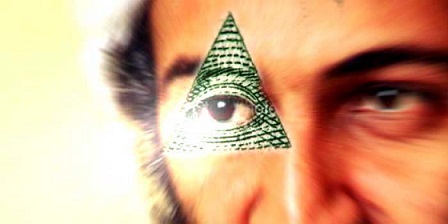
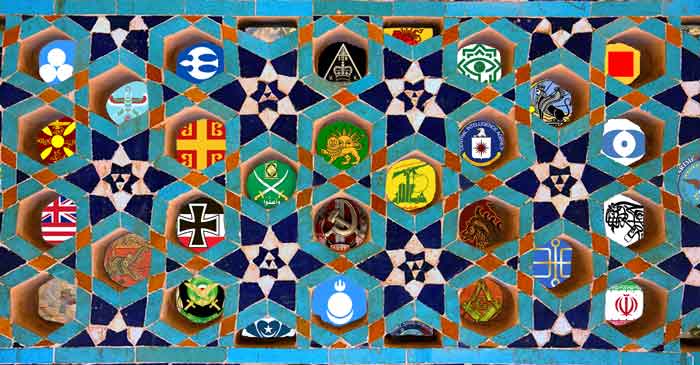
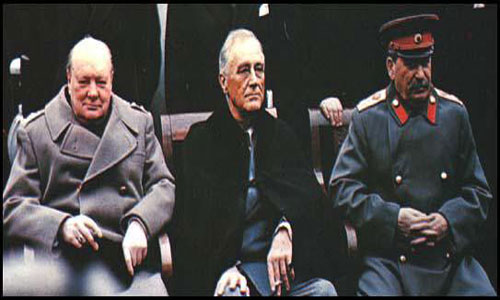

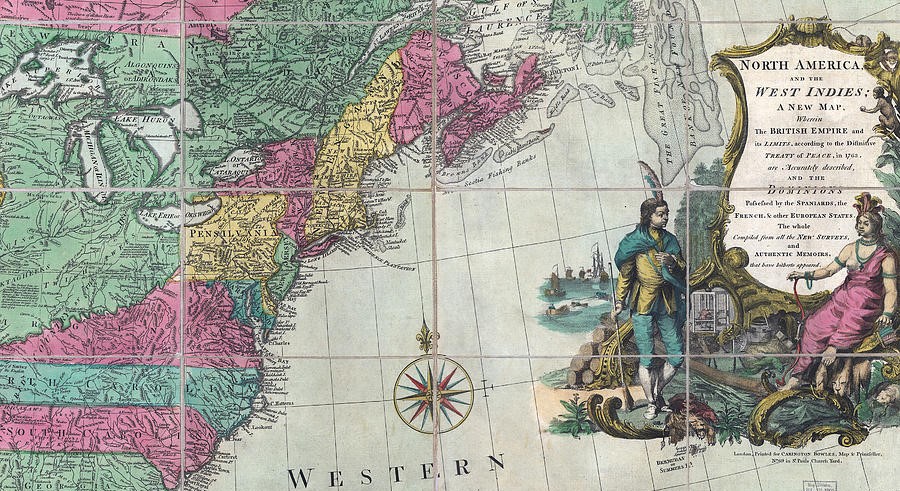
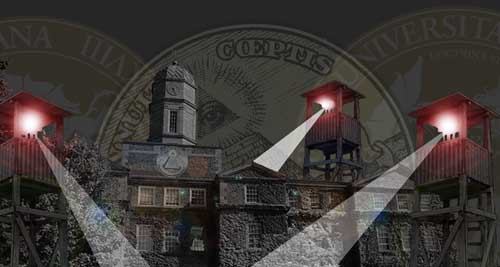
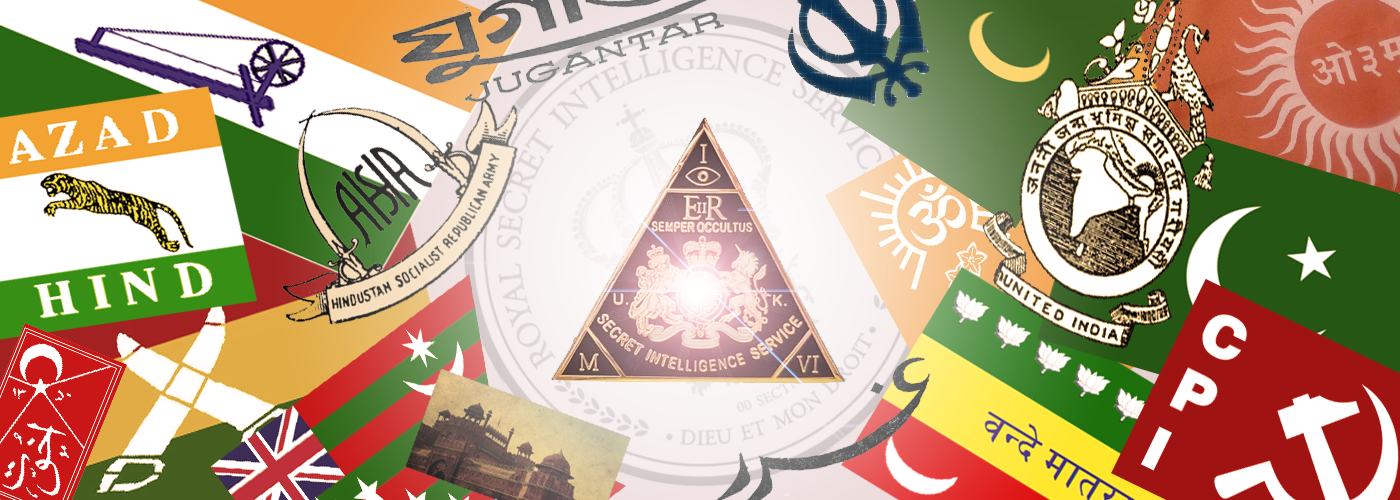




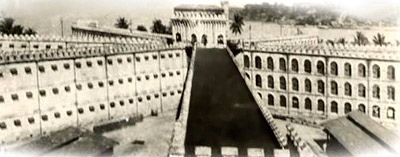


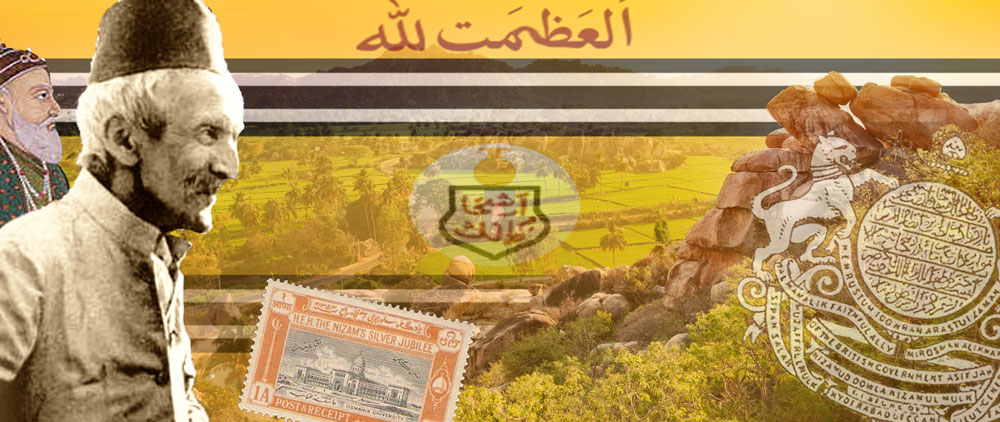








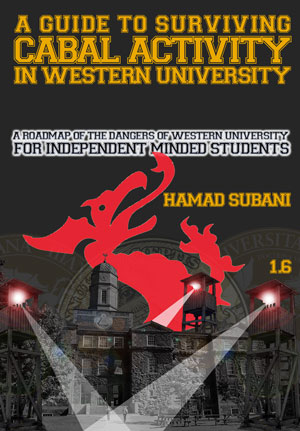

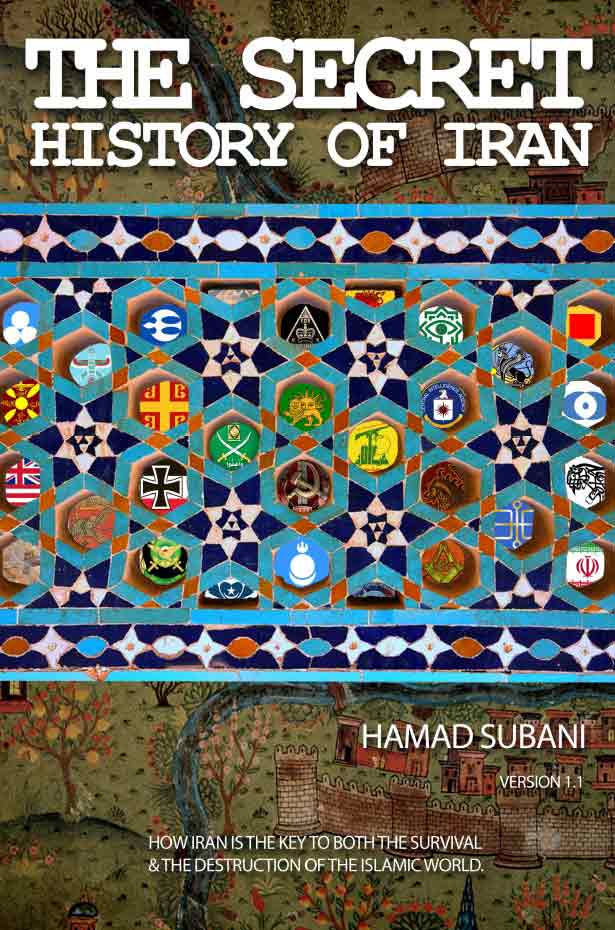
Interesting, all of this corroborates my own research and conclusions. This is my website: Esoteric Awakening. Stop by anytime if you like and feel free to use any of my work however you want, it may offer you more insights to use for your own work. I will read more of your work soon and will likely ask to republish a piece or two at my website at some point if you are interested, to introduce my readers to your work and website. Cheers mate
https://esotericawakening.com/
Just to mention the vandals/ gaiseric were in 400s AD, as part of the decline of the Roman Empire, not before. Keep up the good work.
Thanks. Gerry is aware of that. Yet he brings it up to highlight their strange affinity to Carthage.
[Samson…”when she discovers her[sic: his] motives.”
Corrected. Thanks.
And fake snow in texas :
https://youtu.be/T61lre0wYVc
lot of things happening in space too which NASA is hiding :
https://youtube.com/c/GinaMariaColvinHill555
Phoenician Navy = Tribe of Dan
Almost. Tribe of Dan blew outa dere per Stephen Pidgeon after embracing the “Sons of Belial” perversion that got the Tribe of Benjamin slaughtered as blamed for their raping to death a Levite’s wife/concubine. Dan is cut out of the list of tribes in Revelation/Apocalypse, true, but Dan buddied up to the Amorites, Satanista Semites who reverse everything God is and wishes, so very heavy into Genesis 3:15 Woman & Seed persecuting as the foes of Satan, so anti-marriage, pro-gay, pro-slavery, promoting “gods made people as slaves” creation story everything opposite, Allah is crazy vicious slaver god everything opposite. Dan PLUS Amorite imposters pretending to be Neo-Sumerians, Neo-Assyrians, Neo-Babylonians, Neo-Cons! Rinse and repeat. DAN PLUS AMORITES ERASED JEWS AND NEW JEWS, CATHOLIC CHRISTIANS bringing divorce, usury, perpetual debt with “Protestant Reformation.” GREAT DECEPTION punked by Woman of Rev 12 at Fatima, Portugal, 1917 “Miracle of the Sun” with SIster Lucia replaced by Lucy2 sisterlucytruth.org